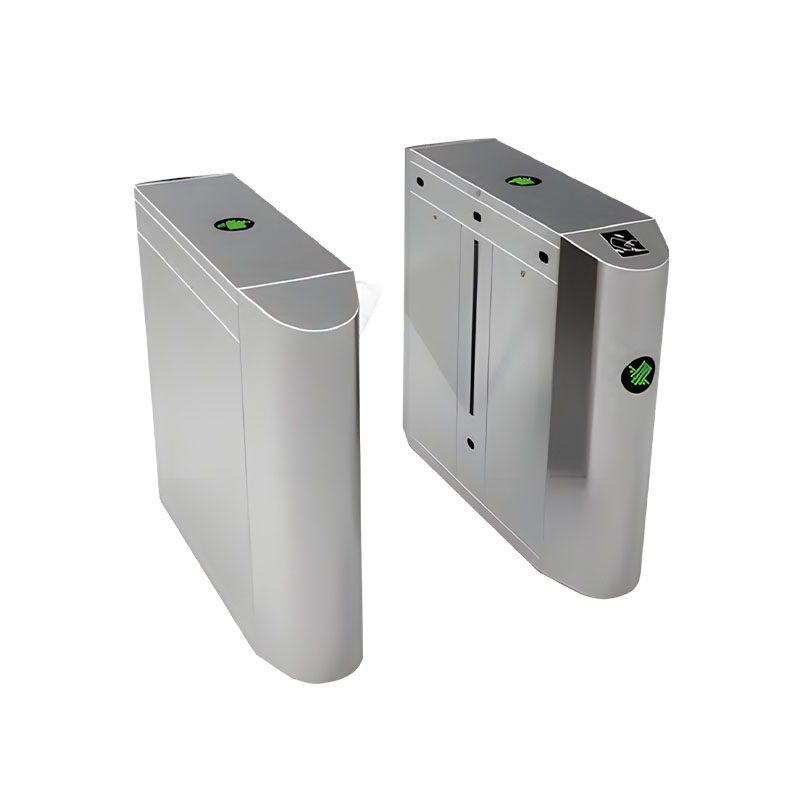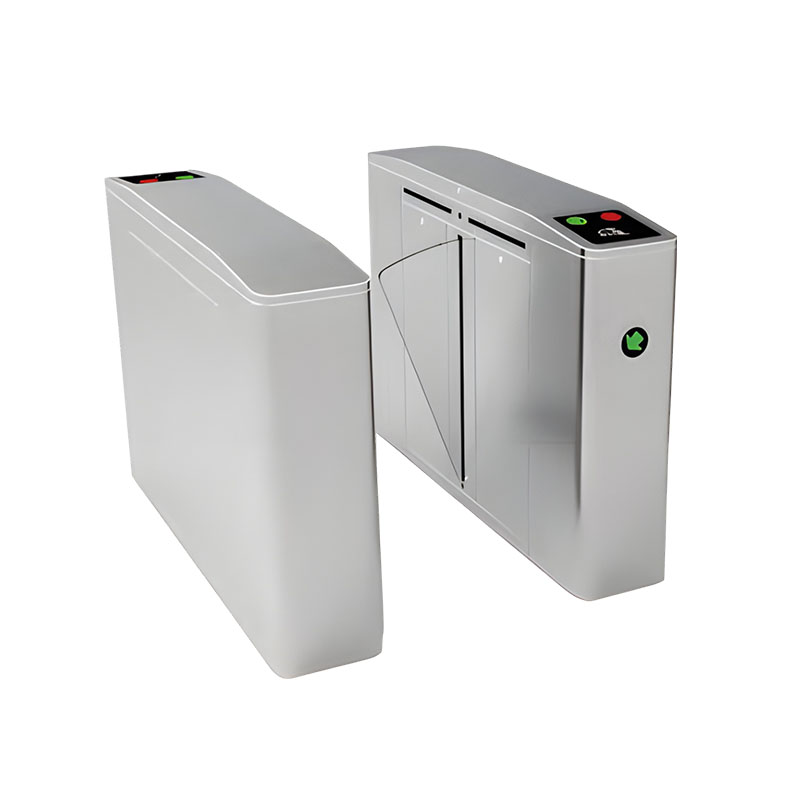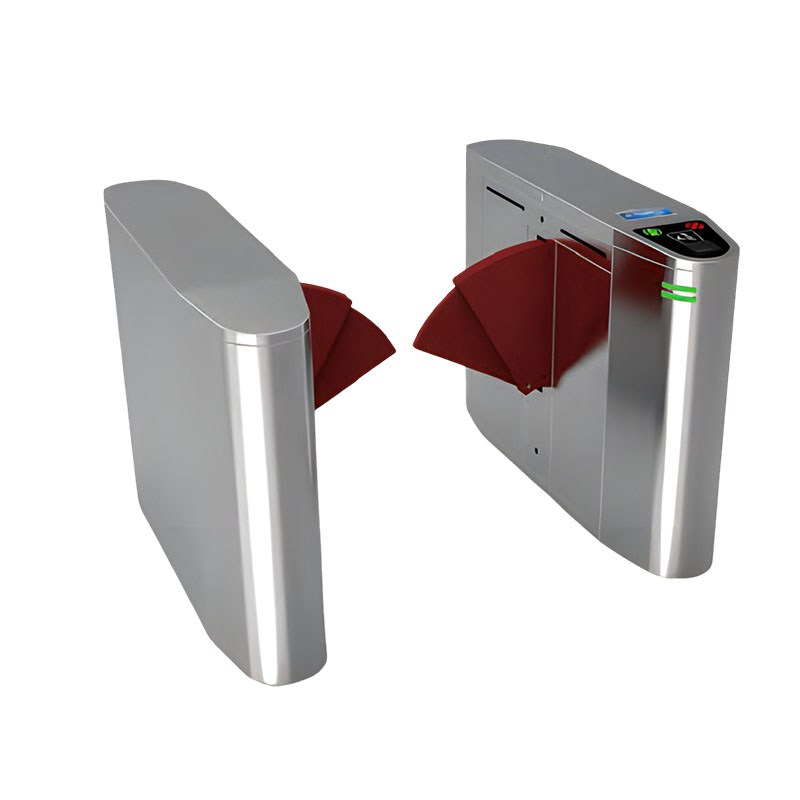In large public places, how can pedestrian access gate cope with the challenge of high traffic flow and ensure traffic efficiency?
Release Time : 2025-01-20
In large public places, such as airports, stations, shopping malls, etc., the management of high traffic flow is a complex and critical task. As an important part of modern security management, pedestrian access gate effectively copes with the challenge of high traffic flow and ensures the efficiency and safety of traffic through a series of advanced technologies and management methods.
First, pedestrian access gate achieves fast and accurate identity verification through efficient identity recognition technologies such as face recognition, fingerprint recognition, and ID card scanning. These technologies not only improve the accuracy of recognition, but also greatly shorten the verification time, allowing a large number of pedestrians to pass smoothly in a short time. Especially during peak hours, the system can automatically adjust the verification speed to adapt to the changes in traffic flow and ensure traffic efficiency.
Secondly, the layout and design of pedestrian access gate fully consider the characteristics of traffic flow. In large public places, multiple entrances and exits are usually set up, and each entrance and exit is equipped with a corresponding control system. These systems enable pedestrians to queue, verify and pass in an orderly manner through reasonable layout and planning, avoiding congestion and chaos. At the same time, the system can also dynamically adjust the number of entrances and exits and the verification speed according to real-time traffic data to cope with changes in traffic flow in different time periods.
In addition, the pedestrian access gate also has powerful data analysis and processing capabilities. The system can collect and analyze traffic data in real time, including the number of people passing through, the time of passage, the speed of passage, etc., to provide decision-making support for managers. Through these data, managers can understand the distribution and changing trends of traffic flow, adjust management strategies in time, and optimize traffic efficiency.
When dealing with the challenges of high traffic flow, the pedestrian access gate also focuses on linkage with other security systems. For example, it is combined with monitoring systems, alarm systems, etc. to achieve real-time monitoring and early warning of abnormal behaviors. Once abnormal situations such as illegal intrusion and identity theft are found, the system can immediately trigger an alarm and link related equipment for disposal to ensure the safety of the venue.
Finally, the pedestrian access gate also has a humanized design. Considering the needs and characteristics of different groups of people, the system provides a variety of verification methods and channel options. For example, barrier-free channels or priority access rights are set up for special groups such as the elderly and the disabled to ensure that they can pass quickly and safely. At the same time, the system also provides auxiliary functions such as voice prompts and screen displays to help pedestrians better understand and use the system.
In summary, the pedestrian access gate effectively responds to the challenges of high traffic in large public places and ensures the efficiency and safety of traffic through efficient identity recognition technology, reasonable layout and design, powerful data analysis and processing capabilities, linkage with other security systems, and humanized design.
First, pedestrian access gate achieves fast and accurate identity verification through efficient identity recognition technologies such as face recognition, fingerprint recognition, and ID card scanning. These technologies not only improve the accuracy of recognition, but also greatly shorten the verification time, allowing a large number of pedestrians to pass smoothly in a short time. Especially during peak hours, the system can automatically adjust the verification speed to adapt to the changes in traffic flow and ensure traffic efficiency.
Secondly, the layout and design of pedestrian access gate fully consider the characteristics of traffic flow. In large public places, multiple entrances and exits are usually set up, and each entrance and exit is equipped with a corresponding control system. These systems enable pedestrians to queue, verify and pass in an orderly manner through reasonable layout and planning, avoiding congestion and chaos. At the same time, the system can also dynamically adjust the number of entrances and exits and the verification speed according to real-time traffic data to cope with changes in traffic flow in different time periods.
In addition, the pedestrian access gate also has powerful data analysis and processing capabilities. The system can collect and analyze traffic data in real time, including the number of people passing through, the time of passage, the speed of passage, etc., to provide decision-making support for managers. Through these data, managers can understand the distribution and changing trends of traffic flow, adjust management strategies in time, and optimize traffic efficiency.
When dealing with the challenges of high traffic flow, the pedestrian access gate also focuses on linkage with other security systems. For example, it is combined with monitoring systems, alarm systems, etc. to achieve real-time monitoring and early warning of abnormal behaviors. Once abnormal situations such as illegal intrusion and identity theft are found, the system can immediately trigger an alarm and link related equipment for disposal to ensure the safety of the venue.
Finally, the pedestrian access gate also has a humanized design. Considering the needs and characteristics of different groups of people, the system provides a variety of verification methods and channel options. For example, barrier-free channels or priority access rights are set up for special groups such as the elderly and the disabled to ensure that they can pass quickly and safely. At the same time, the system also provides auxiliary functions such as voice prompts and screen displays to help pedestrians better understand and use the system.
In summary, the pedestrian access gate effectively responds to the challenges of high traffic in large public places and ensures the efficiency and safety of traffic through efficient identity recognition technology, reasonable layout and design, powerful data analysis and processing capabilities, linkage with other security systems, and humanized design.







